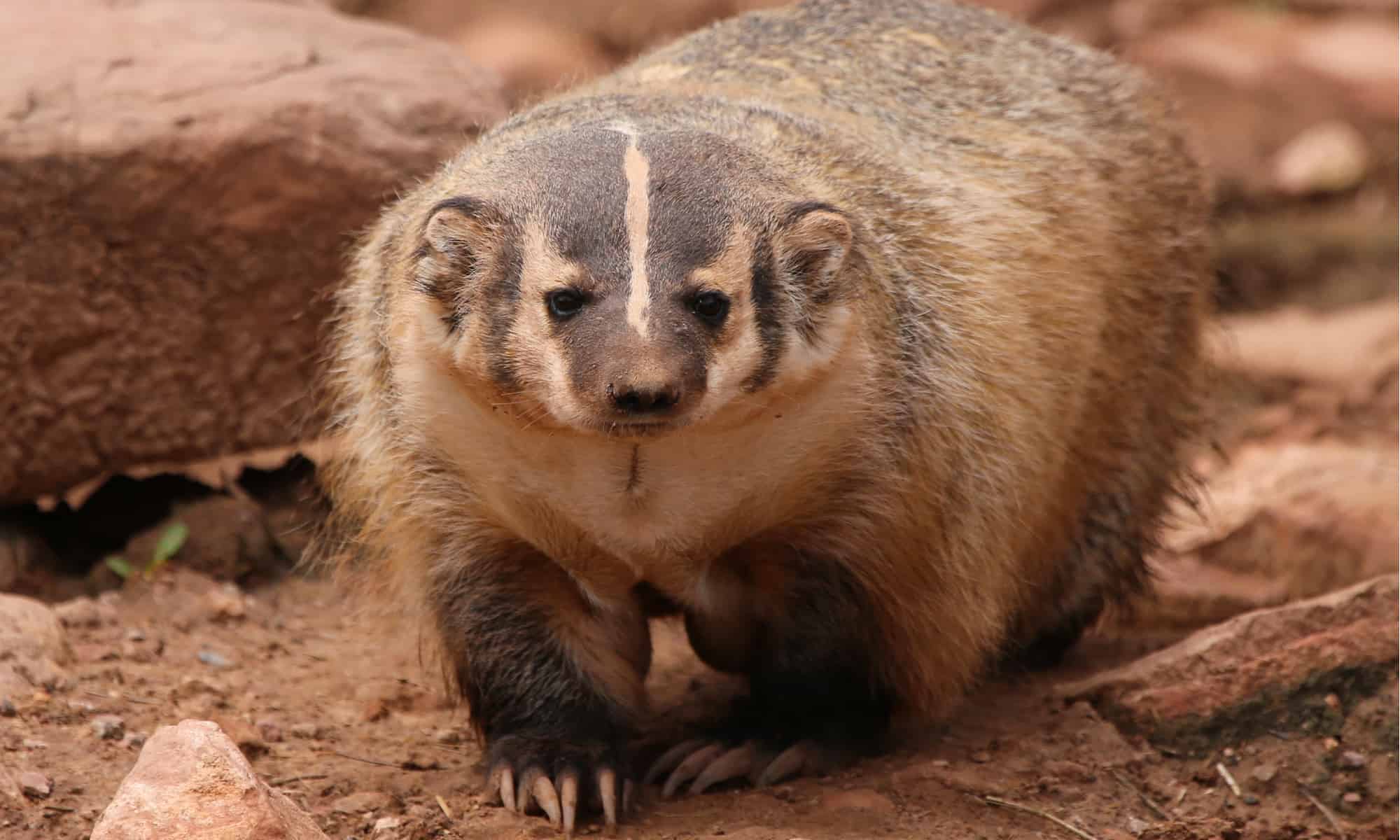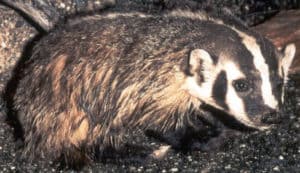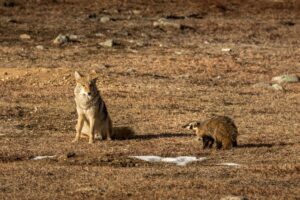Badgers are solid animals with sharp claws and teeth. Wisconsin is known as the Badger State with the Badger being the mascot for the University of Wisconsin. They tend to have a reputation for being a bit ornery, combined with their sharp claws and you have to ask are badgers dangerous? Do badgers attack people? What should you do if you come across a badger? Let’s find out.
What are badgers?
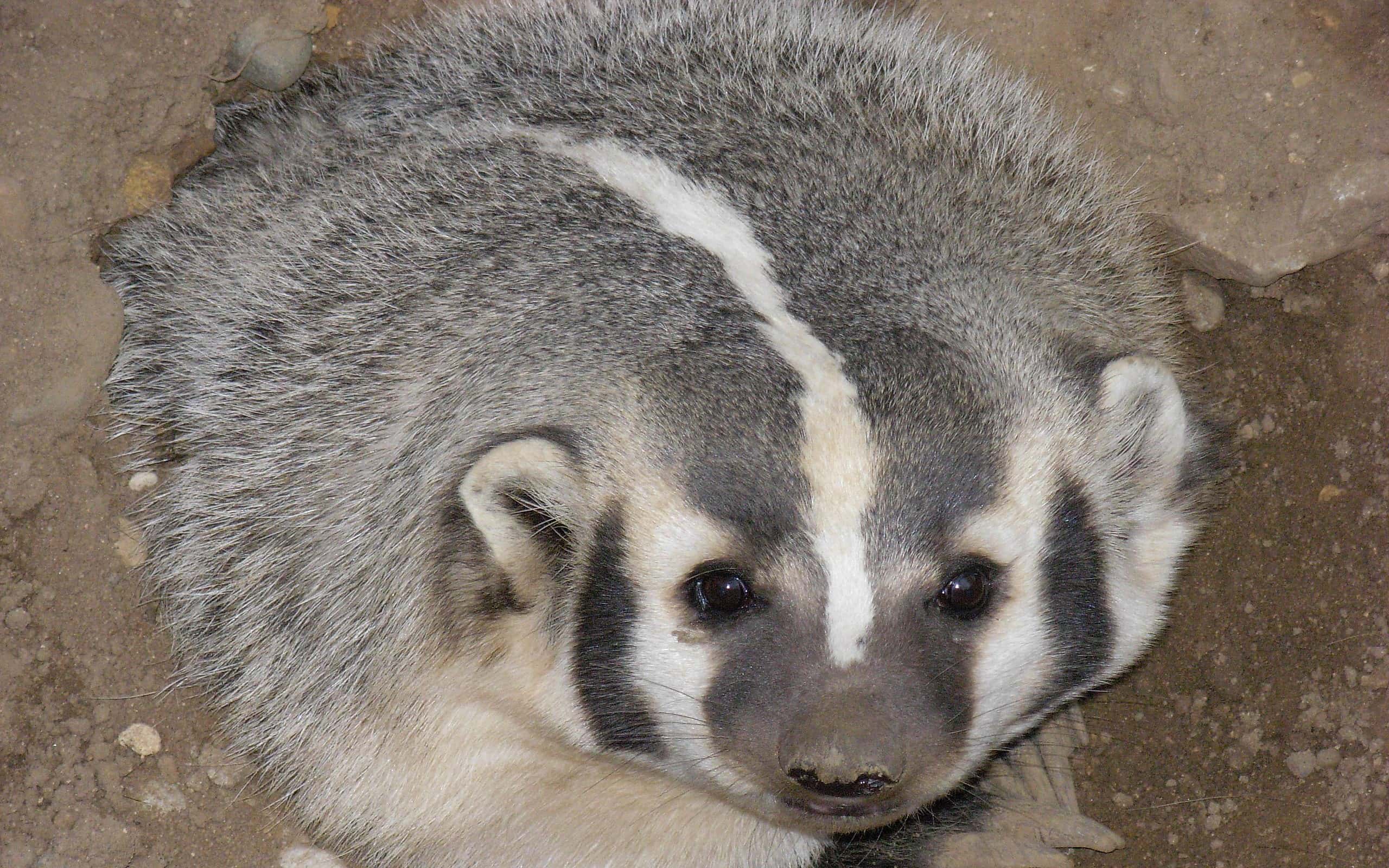
Badgers are part of the weasel family.
©Jonathunder, CC BY-SA 3.0, via Wikimedia Commons – Original / License
Badgers look similar to skunks or raccoons but are a part of the weasel family, Mustelids, like ferrets, otters, and wolverines. They have thick grayish-black fur with white markings on their face and a thin white stripe down their back. There are 11 species of badgers with the American and European being the most common. Badgers have long sharp claws that they use to dig elaborate burrow systems. American badgers are solitary creatures that live on their own in their burrows while European badgers are very social and have family groups that share burrows. Badgers are wider and flatter than skunks, with European badgers being larger than Americans. American badgers are 9 inches tall and 20-30 inches long, while European badgers are 12 inches tall and 25-45 inches long (plus a 5-8 inch tail on both).
Honey badgers look distinctively different than badgers, being all black on the bottom half of their body and a whitish-gray back. They are not in the same subfamily as badgers. For this article, we will be looking at the American badger and European badger.
Are badgers dangerous?
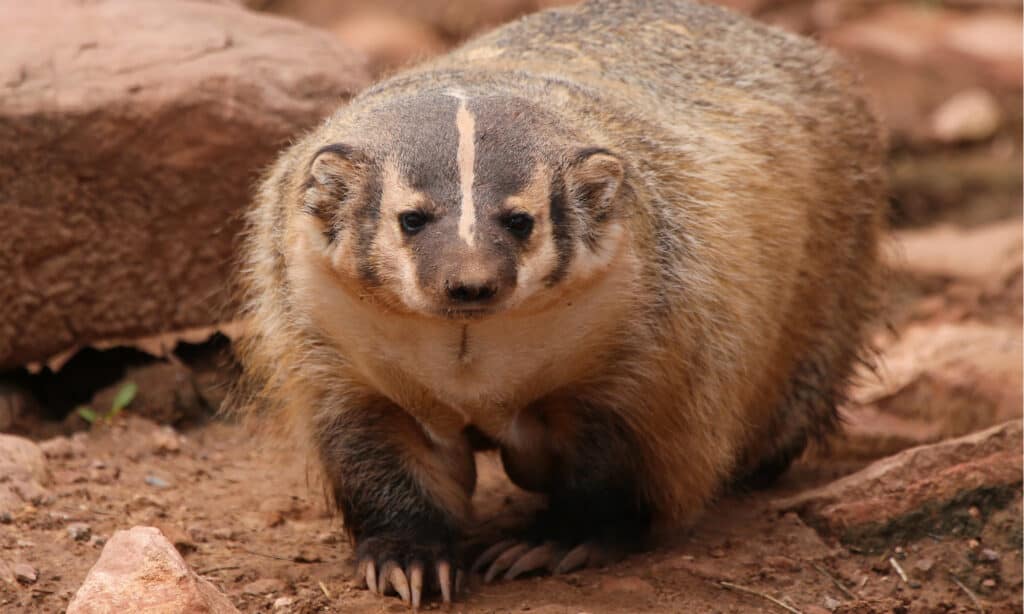
Badgers can be dangerous, but attacks on people are rare.
©Steve Boice/Shutterstock.com
Badgers can be dangerous, but attacks on people are rare. They are aggressive animals but they don’t go looking for trouble. American badgers are solitary animals so if other animals (or people) enter their territory they will hiss and growl, and maybe show their teeth. They can also release an unpleasant smell, like skunks. Badgers have strong muscular bodies and powerful jaws so they can do some damage.
Do badgers attack people?
Badgers do not typically attack people but there have been incidents where badgers have attacked.
- In the UK a report of a series of badger attacks by the same badger was reported. “Boris” as they named him was a hand-raised badger that had been later staying at the Vale Wildlife Rescue. Somehow he got out and did not do well associating with humans in the real world. He bit two men that were going home from a pub, then went after a woman who was out walking her dog, and finally attacked a man in his garage, biting him on the arm and leg which required hospitalization. The National Federation of Badger Groups used this as an opportunity to remind people of the dangers of trying to domesticate wild animals.
- An online video shows footage of a man being bitten by a badger at a BBQ party. A man showed up at the party holding a badger and another man tried to pet it when it chomped down on the man’s hand. This is a case where the badger felt threatened and was just trying to protect itself.
Do badgers bite?
Badgers can bite, but it is very rare. If they are cornered or feel threatened they can bite with their powerful jaws and teeth. Badger bites on humans are extremely rare.
What are badger’s teeth like?

This badger skull shows the sharp canine teeth on top and bottom.
©Sinisa Botas/Shutterstock.com
Badgers have large meat-tearing teeth, with two long canine teeth on the top and bottom. American badgers are carnivores and use their teeth to tear into mice, voles, squirrels, and pocket gophers. European badgers are omnivores and eat small mammals, birds as well as nuts, and fruit. Both badgers use their teeth to ward off other predators and as protection. Badgers are known to take on larger animals than themselves and win.
Do badgers have rabies?
Badgers can carry rabies, but they are not common carriers. The most common wild animals that carry rabies are raccoons, bats, foxes, and skunks. Dogs are the most common domestic animal that carries rabies but vaccination programs have almost eliminated rabies in the United States with only an average of 1-3 rabies deaths a year. In other countries, rabies is still a huge problem. The CDC reports that there are an average of 59,000 rabies deaths a year worldwide. Many undeveloped areas have rabid dogs wandering the streets and they do not have access to the vaccination shots to be taken after being bitten by an animal. In China, there were a few cases of people dying from rabies from badger bites. Researchers found between 2004-2006, in Coteau County, western Zhejiang province in eastern China, 7 people died from rabies after badger bites. All seven were reported to have been bitten when they “captured or carried home” the badgers. Researchers looked at statistics in 2004 and found there were 0 cases of anyone being bitten by badgers in this area concluding this was an isolated incident.
Do badgers have other diseases?
Badgers can have tuberculosis infection (TB) which is a problem because they pass it on to cattle, killing livestock. In England, there was an outbreak affecting cattle in 2013 and 2014 with the badgers thought to be the initial carriers. Humans could get infected with TB from drinking unpasteurized milk or by inhaling the bacteria while working with cattle that are infected but the CDC says, “Direct transmission from animals to humans through the air is thought to be rare.”
What should you do if you come across a badger?
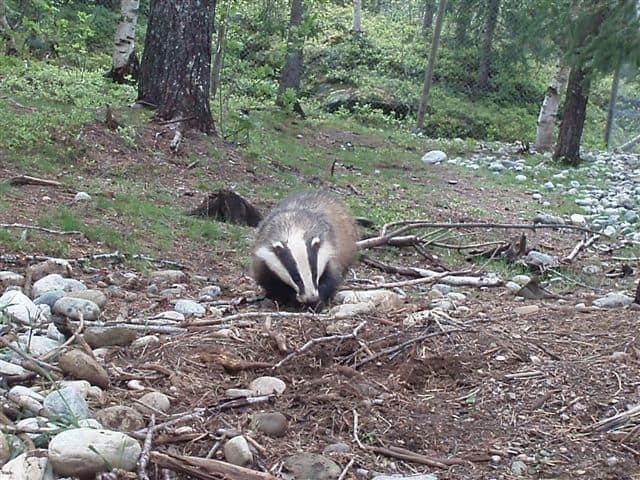
A badger will probably run away if seen.
©User: Orland, CC BY-SA 2.5, via Wikimedia Commons – Original / License
If you see a badger, it is likely it runs away or finds its burrow to hide in. If it feels threatened, it may hiss, growl and release its smelly scent. Back away slowly and find shelter nearby. Do not attempt to catch a badger or handle a badger. Call authorities if you see a badger acting sluggish or out of sorts so that it can be collected and examined for rabies.
Thank you for reading! Have some feedback for us? Contact the AZ Animals editorial team.

